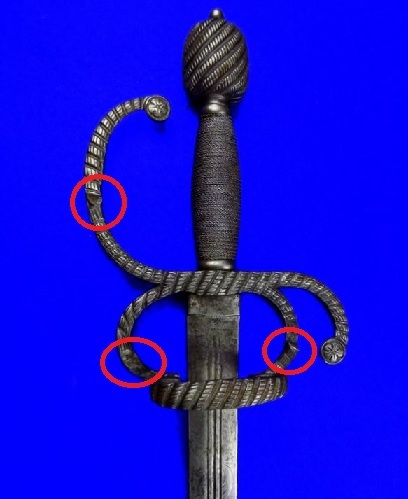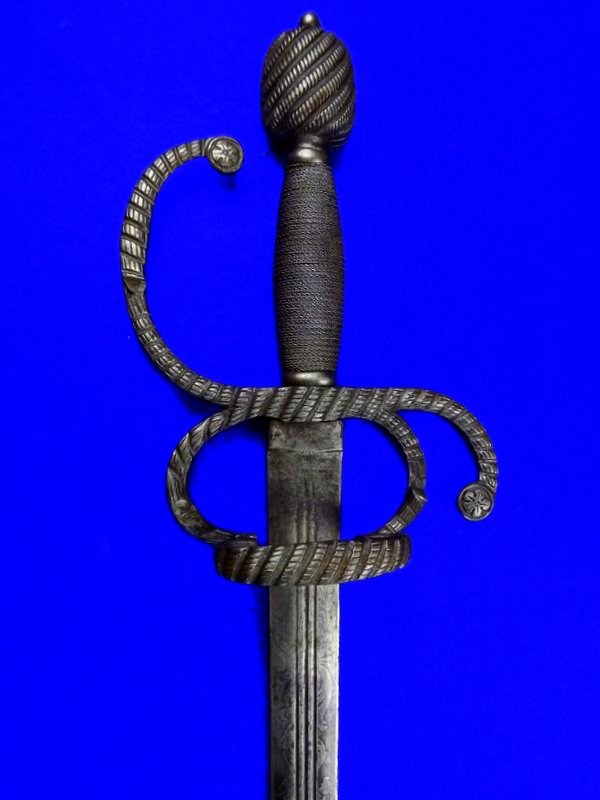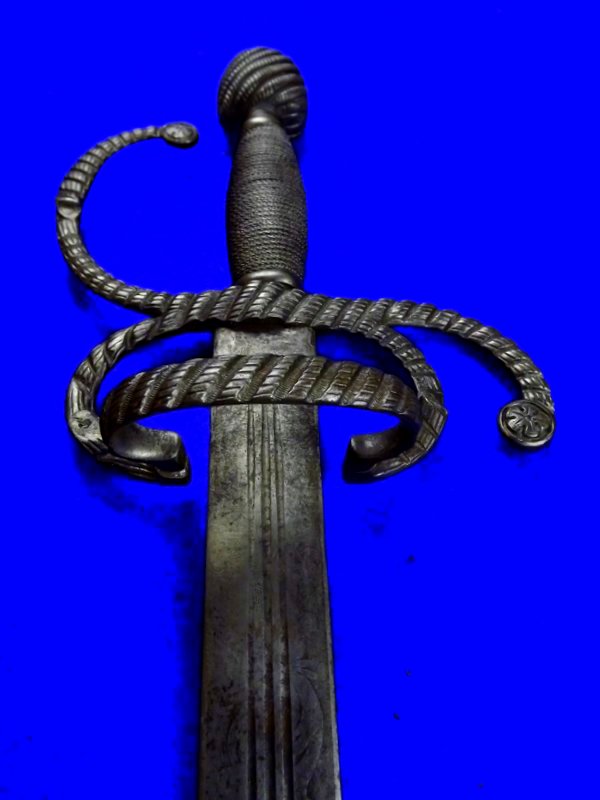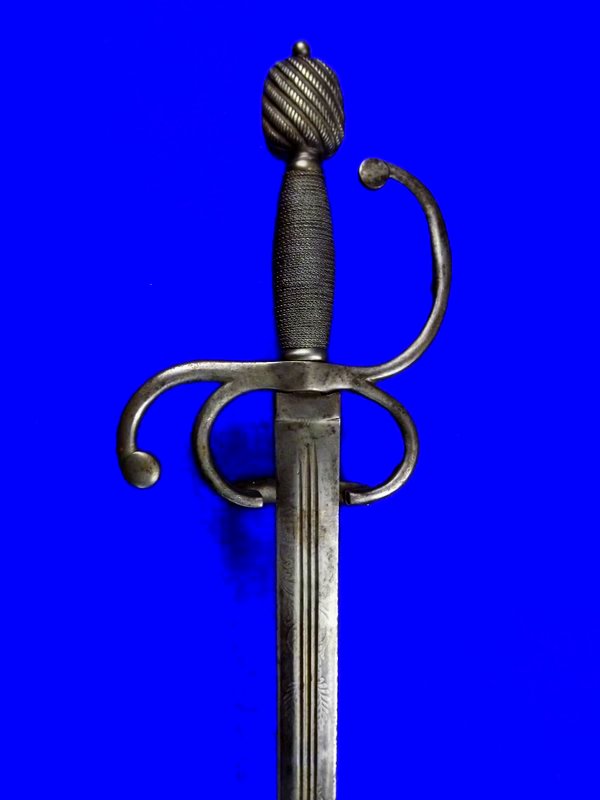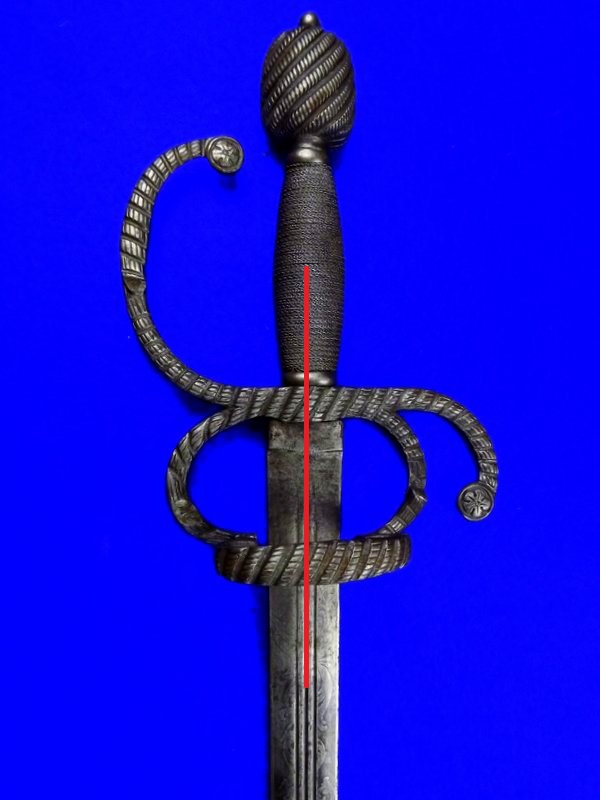Posts: 399 Location: Slovakia
Sun 07 Dec, 2014 10:53 pm
For me itīs difficult to say anything certain on the age / provenience of the sword, so just some thoughts:
1. As Nathan said, some period rapiers have very little / none decoration on the backside.
2. There are 16th - early 17th century rapiers with very simple hilts, without any counterguard, with only branches and a side ring, quite similar to this one. But:
3. From what I see on the picture, the hilt was altered - it seems that the loopguard has been chopped-off. See the attached picture.
4. This rapier is probably not a part of "case of rapiers", as it has a full handle and a full pommel.
5. Therefore when I saw it my first thought was that itīs a wallhanger (possibly even a quite old reproduction - 19th C ?) which somebody tried to alter to make it more historically "plausible".
But I realize that it could be a far-off speculation:) Anyways, as Evin noted in his very first entry, there is a part of hilt missing.
 Attachment: 44.86 KB
Attachment: 44.86 KB
